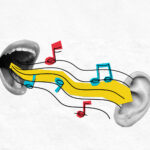What is a Touchpoint?
A touchpoint, in the context of branding, is any point of interaction where a consumer can engage with a brand. This interaction could occur through various mediums such as a mobile app, a podcast, a TV commercial, social media pages, and so forth. In today’s digital age, the number of potential touchpoints is vast and constantly expanding.
Touchpoints and Brand Recall: The Power of Sonic Branding
In the world of marketing and branding, every interaction a consumer has with a brand is an opportunity to make an impression. These interactions, known as touchpoints, can occur across a multitude of platforms and contexts, from a TV commercial to a social media post, from a customer service call to a podcast intro. In the digital age, the number of potential touchpoints is vast and constantly expanding, offering brands a myriad of opportunities to connect with consumers.
One of the most powerful ways to make these connections memorable is through sonic branding. Sonic branding involves the use of sound to reinforce a brand’s identity across all its touchpoints. It’s not just about having a catchy jingle in a TV ad; it’s about creating a consistent auditory experience that consumers associate with your brand, wherever they encounter it.
The Power of Sound
Sound has a unique ability to evoke emotions and memories. A certain melody or jingle can instantly transport us back in time or trigger a strong emotional response. Brands can leverage this power to create strong associations in the minds of consumers. When a particular sound or piece of music is consistently used across all touchpoints, it becomes synonymous with the brand. This leads to increased brand recall, where consumers can instantly recognise the brand upon hearing the sound or music.
Expanding the Sonic Landscape
In the past, sonic branding was often limited to jingles in radio or TV commercials. But today, the possibilities for sonic branding are virtually limitless. Here are just a few examples of how brands can use sound across various touchpoints:
- Digital Platforms: Websites, mobile apps, and social media channels offer numerous opportunities for sonic branding. The sound that plays when a user completes a transaction, the background music on a brand’s YouTube channel, the jingle in a Snapchat filter – these are all potential touchpoints.
- Physical Spaces: Stores, restaurants, hotels, and even public transport can have their unique sonic identities. The background music in a store, the sound of a hotel room door unlocking, the jingle that plays on a bus – these can all enhance the consumer’s experience and reinforce the brand’s identity.
- Events and Experiences: From music festivals to theme parks, from trade shows to virtual reality experiences, events and experiences offer a wealth of opportunities for sonic branding. The music that plays at the entrance, the sound effects used in a ride, the jingle that introduces a performance – these can all create memorable experiences that resonate with the brand.
- Customer Service: Even a brand’s customer service can have its sonic branding. The on-hold music, the sound that plays when a customer joins a chat, the voice of the virtual assistant – these can all contribute to a consistent brand experience.
Creating a Cohesive Sonic Identity
The key to successful sonic branding is consistency. The chosen sound or music should be used across all touchpoints, creating a cohesive sonic identity. It should reflect the brand’s personality and values, and resonate with its target audience. When done right, sonic branding can enhance the consumer’s experience, increase brand recall, and ultimately, drive brand loyalty.
Touchpoints offer brands a wealth of opportunities to connect with consumers. By leveraging the power of sound, brands can create memorable experiences that resonate with consumers, wherever they encounter the brand. Sonic branding is not just about creating a catchy jingle; it’s about creating a consistent auditory experience that reinforces the brand’s identity and leaves a lasting impression.











